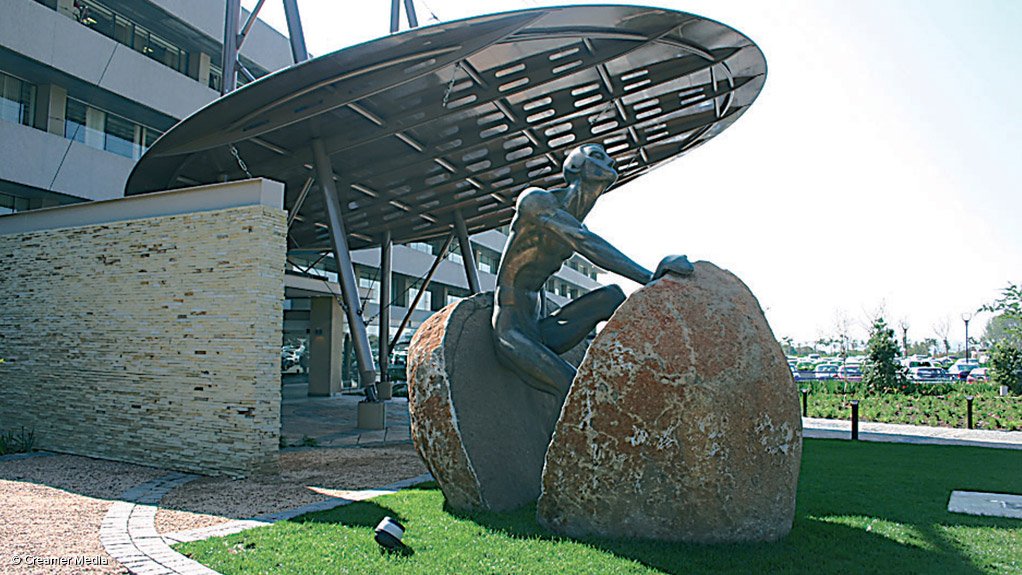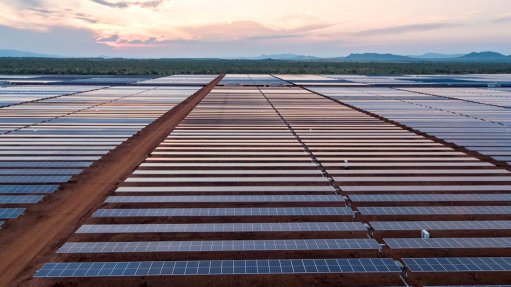Eskom highlights risk of further debt accumulation as it gears up to defend big hikes
Debt-laden electricity utility Eskom is preparing for yet another bruising encounter with consumers in the coming months, during which it will seek to justify it latest R762-billion, three-year revenue application.
If successful with its fourth multiyear price determination (MYPD4) application, Eskom would be entitled to implement three yearly tariff hikes of 15% for the 2019/20, 2020/21 and 2021/22 financial years. The outcome would be a rise in the standard tariff from 94c/kWh currently to 143c/kWh by the end of the tariff period.
However, the National Energy Regulator of South Africa (Nersa) has historically not granted Eskom the full increases for which it has applied.
For 2019/20, any approved tariff hike would be additional to a 4.41% increase already approved by the regulator, following its adjudication, earlier this year, of three regulatory clearing account (RCA) applications. In its determination, Nersa allowed Eskom to recover R32.7-billion, over a four-year period, instead of the R66.6-billion sought.
Eskom has submitted another RCA application for the 2017/18 financial year, which will be adjudicated together with the MYPD4 application and Nersa has announced that it will host public hearings in all nine provinces between January 14 and February 1.
Separately, the State-owned utility has also approached the courts to have Nersa’s 5.23% tariff determination for 2018/19 set aside for failing to adhere to the MYPD methodology, as well as government’s policy of transitioning electricity tariffs towards cost reflectivity. Eskom had applied for a 19.9% increase for the year.
In its argument before the regulator Eskom will highlight the economic risks associated with limiting tariff hikes in a way that resulted in further “subsidised electricity prices” and place a further reliance on either debt or shareholder support to ensure the utility’s sustainability.
Eskom’s debt has increased from below R50-billion in 2008/9 to around R450-billion in 2018/19, despite its tariffs rising from around 20c/kWh to around 94c/kWh over the same period.
Eskom will point to a strong line between the deterioration in its financial position over the past ten years and the weakening fiscal health of the South African government.
“Since 2008, South Africa’s long-term foreign-currency rating has been downgrade by three notches from lower-medium grade to speculative grade or ‘junk’ by two of the three major rating agencies. Eskom’s long-term local-currency corporate bond rating has been downgraded by between five and ten notches, from upper-medium grade in 2008 and is now rated ‘highly-speculative’ by Standard & Poor’s,” Eskom outlines in its submission.
Leaning on a macroeconomic analysis prepared for Eskom by Deloitte, the utility argues that, under low-tariff scenarios, a “toxic loop repeats” whereby its revenue shortfall grows, the country’s fiscal position deteriorates, interest rates rise, sentiment sours, economic growth slows and further credit rating downgrades are triggered.
It will also argue that Eskom has reached its borrowings limits, while government’s fiscal constraints make it difficult for its shareholder to offer an additional backstop beyond the “substantial” support already provided over the past ten years in the form of equity and guarantees.
A R60-billion shareholder loan granted by government was converted into equity in 2015 and Eskom also received a further R23-billion equity injection completed in March 2016. In addition, government approved R350-billion in guarantees on Eskom’s debt, of which Eskom had drawn on R218-billion by 2017/18.
During the hearings, Eskom will argue that it would be ill-advised for Nersa to continue to limit Eskom’s tariff increases to below cost-reflective levels and will urge the regulator to approve increases that are at least sufficient to transition Eskom towards a more cost-reflective electricity tariff over the coming years.
As usual, more than 50% of Eskom’s revenue application relates to primary energy and operating costs, which include employee costs. These will, no doubt, be heavily contested during the hearings.
However, a good deal of attention is also likely to be given to what a reasonable return would be, as well as what the depreciation allowance should be. The depreciation allowance is determined by dividing the cost of the asset, less the residual value, by the estimated useful life of that asset.
Eskom is proposing that the depreciation allowance be increased from the R24.9-billion allowed in 2018/19 to R64.6-billion in 2019/20, R72.9-billion in 2020/21 and to R75.6-billion in 2021/22.
The steep rise is attributed to the fact that the current asset valuation is higher, by about R250-billion, than the values used in the MYPD3 and because the average remaining useful life estimates for the transmission licensee is shorter.
Already, the Energy Intensive Users Group (EIUG) has indicated that it will be calling for depreciation to be disallowed as a cost item and that Eskom be “run for cash”, while consultations are held on the utility’s future business model.
In parallel, the EIUG says Eskom should take urgent steps to cut costs, moderate price increases and to sustain industrial electricity tariffs at levels that are in line with our competitor countries.
In a recent statement, EIUG chairperson Dr Tsakani Mthombeni describes electricity tariffs, together with price-path uncertainty, as the biggest threat to large power users in South Africa.
He adds that the economy can “no longer afford Eskom’s price shocks”.
Comments
Press Office
Announcements
What's On
Subscribe to improve your user experience...
Option 1 (equivalent of R125 a month):
Receive a weekly copy of Creamer Media's Engineering News & Mining Weekly magazine
(print copy for those in South Africa and e-magazine for those outside of South Africa)
Receive daily email newsletters
Access to full search results
Access archive of magazine back copies
Access to Projects in Progress
Access to ONE Research Report of your choice in PDF format
Option 2 (equivalent of R375 a month):
All benefits from Option 1
PLUS
Access to Creamer Media's Research Channel Africa for ALL Research Reports, in PDF format, on various industrial and mining sectors
including Electricity; Water; Energy Transition; Hydrogen; Roads, Rail and Ports; Coal; Gold; Platinum; Battery Metals; etc.
Already a subscriber?
Forgotten your password?
Receive weekly copy of Creamer Media's Engineering News & Mining Weekly magazine (print copy for those in South Africa and e-magazine for those outside of South Africa)
➕
Recieve daily email newsletters
➕
Access to full search results
➕
Access archive of magazine back copies
➕
Access to Projects in Progress
➕
Access to ONE Research Report of your choice in PDF format
RESEARCH CHANNEL AFRICA
R4500 (equivalent of R375 a month)
SUBSCRIBEAll benefits from Option 1
➕
Access to Creamer Media's Research Channel Africa for ALL Research Reports on various industrial and mining sectors, in PDF format, including on:
Electricity
➕
Water
➕
Energy Transition
➕
Hydrogen
➕
Roads, Rail and Ports
➕
Coal
➕
Gold
➕
Platinum
➕
Battery Metals
➕
etc.
Receive all benefits from Option 1 or Option 2 delivered to numerous people at your company
➕
Multiple User names and Passwords for simultaneous log-ins
➕
Intranet integration access to all in your organisation





















